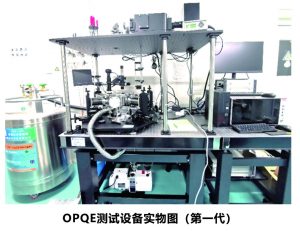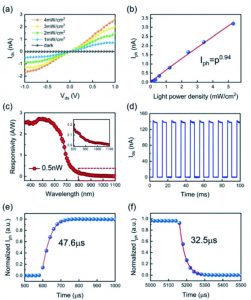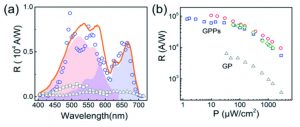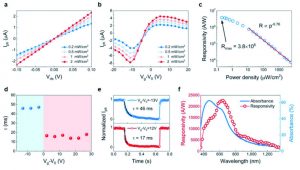
Model:OPQE-ST/LT/MT
1,Test system functionality
Based on scientific research needs, the Integrated Characterization System for Optoelectronic Materials and Devices (OPQE) is designed for testing semiconductor devices, functional materials (such as perovskites), light-emitting devices and other comprehensive performance characterization systems.
- It can realize low temperature, vacuum, ultra-continuous spectroscopy, transient and other photoelectric performance test conditions
- The testable parameters include: output characteristics, transfer characteristics, dark current, photocurrent (photovoltaic materials), light response speed, variable light intensity test, capacitance, spectral response, etc.
 |
 |
Equipment structure diagram, photoelectric test principle
2,Configure the parameters
The system consists of three parts: light source, transmission optical path, probe sample stage and photoelectric test. According to user needs, the three major parts can be customized and developed to achieve different spectral coverage, different test environments and different test functions.
- Light source type: UV reinforced deuterium lamp / ultra-continuous white laser / multi-wavelength monochromatic laser
- Probe station type: low temperature / room temperature / high temperature, with back grid, fiber optic into the magnetic field, vacuum, etc
- Type of optical signal coupling: The spot size of the cryogenic vacuum table is generally mm or cm
Optical fiber import type, the spot size is determined by the core diameter of the fiber
At room temperature, the micro spot is approximately 2 μm and can be as small as 500 nm spot when the electrode is ejected
- Measuring operation device: divided into manual control, semi-automatic, fully automatic three specifications

3. Measured data

(1)User measured data

Test subject: High electron mobility semiconductors (published in Nanoscale, 2019)
Test means: room temperature test + vacuum probe table (liquid nitrogen open cycle) + B1500 + 500W deuterium lamp + monochromator
Test content: the change of optical current with optical power, spectral response, response speed
(2)User measured data

Test object: organic semiconductor heterostructure
(Posted in: Nano Letters, 2019)
Test methods: room temperature test + vacuum probe table (liquid helium closed cycle) + Keithley 4200 + ultracontinuous white laser + acousto-optical crystal modulator
(3)User measured data

Test object: two-dimensional inorganic semiconductor heterostructure
(Posted: ACS Nano 2020)
Test means: room temperature test + vacuum probe table (liquid helium closed cycle) + Agilent B1500+ 500W xenon lamp + monochromator
Test content: output transfer curve, optical response with the change of optical power, optical response speed, spectral response




